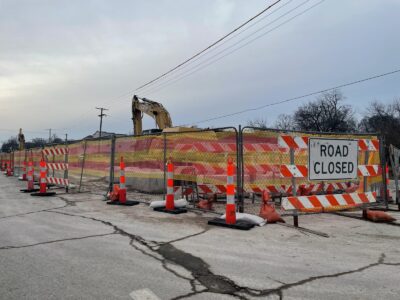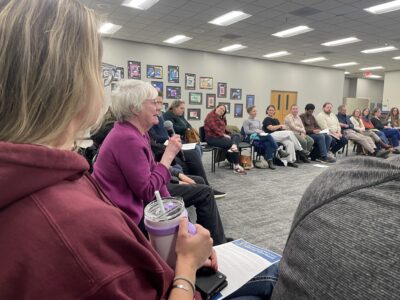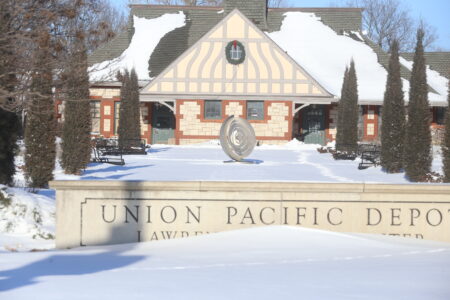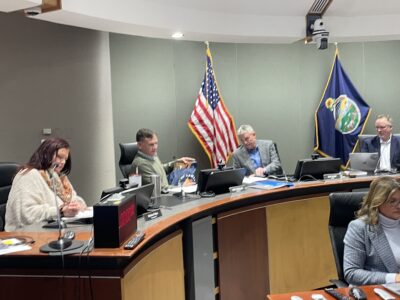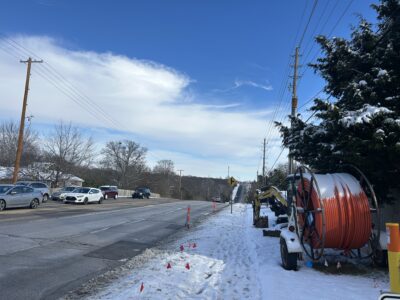Citywide election on proposed $25 million recreation center not likely

A map of the proposed layout of the Rock Chalk Park sports complex, proposed for about 90 acres north of the northeast intersection of Sixth Street and the South Lawrence Trafficway. Note that north on the map is to the right.
A proposed $25 million city recreation center/youth fieldhouse will come with several amenities, but a ballot box likely won’t be one of them.
A majority of city commissioners recently have expressed no interest in putting the issue of whether to move forward with the project up to a public vote.
“My main thought is we did have a public election about this at one point,” said City Commissioner Hugh Carter.
The city is proposing to pay for about 85 percent of the proposed project with its share of revenue from an existing one-cent countywide sales tax that was approved by voters in 1994.
The ballot language in 1994 indicated the city would use the sales tax — which never expires — for three purposes: property tax reduction; funding for facilities for the Lawrence-Douglas County Health Department, Bert Nash Mental Health Center and Douglas County Visiting Nurses; and the “development and operation of parks and recreation facilities and programs.”
City commissioners at their meeting at 6:35 p.m. Tuesday will discuss the recreation center project. Commissioners will decide whether they want staff members to begin crafting formal agreements with the Kansas University Endowment Association to partner on a sports complex at a site just north of the northeast intersection of Sixth Street and the South Lawrence Trafficway. The project would include the city’s multigym recreation center, and several KU facilities including a softball stadium, track and field stadium and soccer field.
The idea of putting the $25 million recreation center to a vote has gained traction with some residents.
“We know a lot of people are interested in having a public vote because it is a huge outlay of money,” said Leslie Soden, a leader of a new citizen’s group called Madre Lawrence, which hasn’t taken an official position on the recreation center project. “One of the problems the city has been having with this project over the last six months is getting public buy-in of the project.”
Three of the four city commissioners the Journal-World was able to speak with in recent days, though, said they were not currently considering asking for voter approval of the project. All three — Mayor Bob Schumm, City Commissioner Mike Dever and Carter — pointed to the language on the 1994 ballot.
“I believe the understanding of the voters at that time is that the majority of the dollars would be spent to enhance our recreation facilities in the community,” Dever said.
The 1994 vote
Large amounts of the revenue generated from the 1994 sales tax have been spent on recreation projects. The city’s parks and recreation web site estimates more than $30 million has been spent on recreation projects since 1994.
The proposed recreation center — which would include eight gyms, a walking trail, fitness room and other amenities — would dwarf all previous recreation projects.
The next largest recreation project funded by the sales tax was the $9 million Lawrence Indoor Aquatic Center, which opened in 2001. Other major projects include:
• $3.2 million for Eagle Bend Golf Course in 1998.
• $2.9 million in renovations to the Lawrence Outdoor Aquatic Center.
• $2 million in renovations to the East Lawrence Recreation Center in 1997.
• $2 million for the Clinton Lake Softball Complex in 1997.
• $950,000 for Prairie Park Nature Center in 1999.
City officials have acknowledged that part of the reason the costs of the proposed recreation center now are at $25 million is because there is an economic development component to the project.
The city is projecting the large facility annually will attract about 30 events, such as youth tournaments and sports camps.
City officials haven’t put a number on how much a traditional recreation center would cost, but a year ago, the city was considering plans for a five-gym center that also would include a fitness room and walking track for $12 million in public funding and about $3 million in private funding.
When voters went to the polls in 1994, the idea of building a community recreation center was discussed — it was planned for Centennial Park — but the idea of building a 181,000-square-foot regional recreation center that would also serve as an economic development tool was not.
“I understand the question is whether this is an overreach in terms of economic development,” Mayor Bob Schumm said. “I don’t think it is. We will be able to serve some tournaments, which will be great, but we also have established the fact that we are severely short of indoor gym space for a community our size. This will meet a local need.”
Other needs
The 1994 ballot language, however, didn’t just address recreation projects. Property tax relief was a major selling point to the public. The city annually uses the sales tax to replace the equivalent of five mills of property taxes in its general operating fund. In 2012 that is about $4.2 million.
The ballot language also called for the “acquisition, construction and improvement of facilities” for Bert Nash, the Health Department, and Visiting Nurses.
During the campaign, that provision of the ballot generally was understood to refer to plans to build a new Community Health Building, which was constructed across from Lawrence Memorial Hospital.
The bonds for the health facility will be paid off in 2016, freeing up about $1 million a year for the city to spend on the recreation center project. But the 1994 ballot language doesn’t provide any indication on whether voters were assuming that the $1 million a year would be invested in recreation projects or whether it would be re-invested into other facility needs for the health organizations.
The ballot language also was written in a way to give the city authority to spend sales tax money on any other “general governmental purpose.”
Over the years, the city has used the sales tax money for a variety of purposes, most notably, spending between $350,000 to $500,000 a year on street maintenance, an item that wasn’t presented to the electorate in 1994.
City Commissioner Mike Amyx — who has expressed concerns about the costs of the proposed project — has said he doesn’t want to rule out the idea of a public vote on the matter.
“I’m hearing the question raised from time to time, and I think it is something to consider,” Amyx said. “We’re talking about a big project and we’re talking about issuing bonds for a big project.”


